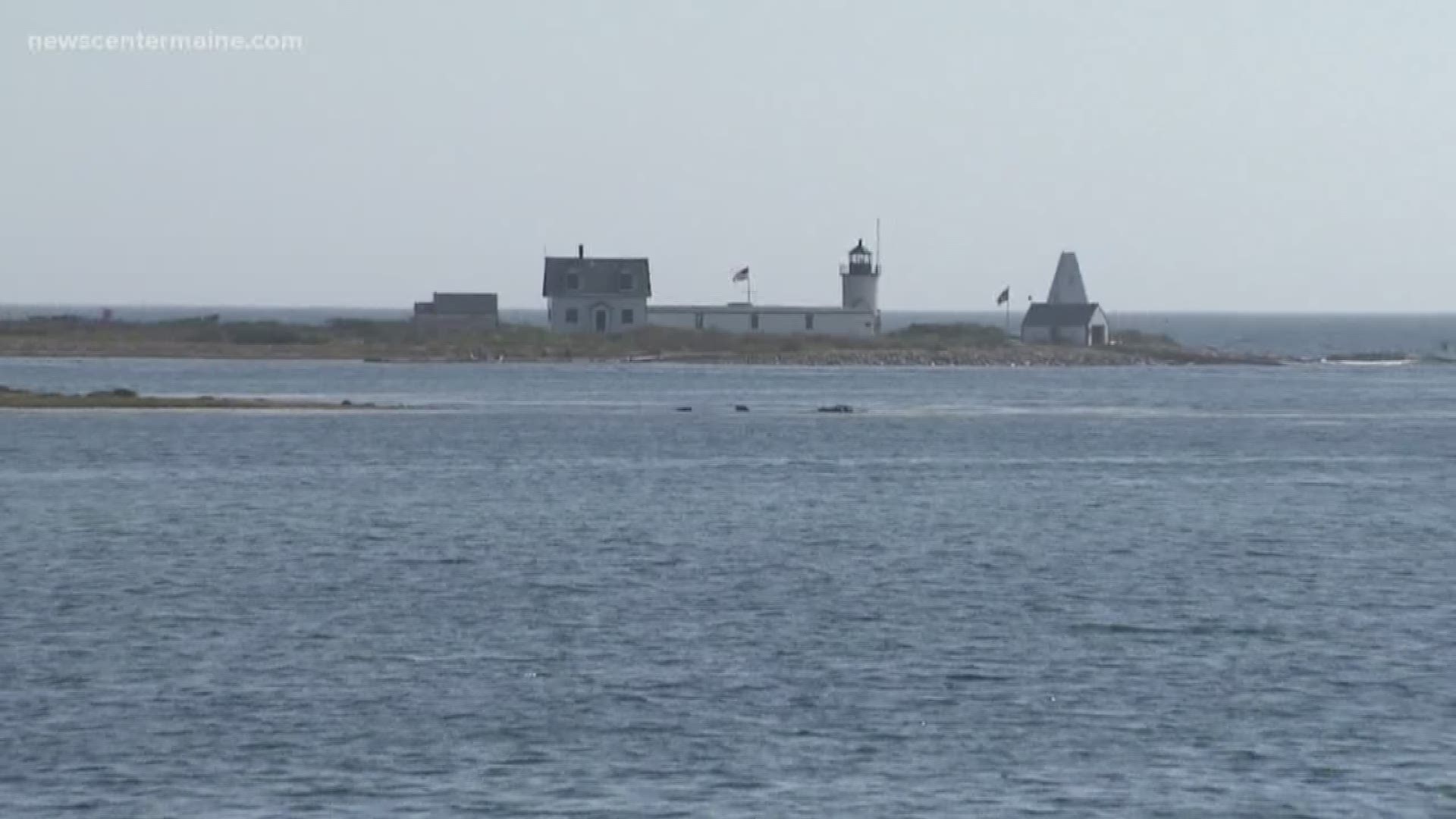KENNEBUNKPORT (NEWS CENTER Maine) -- Finding purpose off the coast of Cape Porpoise.
Students from a Maine high school and university are joining forces to research what it will take for an entire island to go off the power grid, and the timing is urgent.
The lighthouse keeper of more than 20 years at Goat Island Light, says they are running on "borrowed time." The underground cable that brings power to the island is beginning to break. Students say solar, wind, and tidal energies are likely solutions.
Getting to Goat Island, off the coast of Cape Porpoise, is the highlight for students from Kennebunk High School. It's part of a class where they earn college credit.
"To be honest with you I've taken other environmental science courses before and this one was much more interactive," said Meg Noble, a Kennebunk High School senior.
Tuesday marked their latest trip out to collect data.
"Solar wind and tidal," explained Roxanne James, a senior at University of New England.
Her college peers are taking the same Gulf of Maine Studies class as the high school students. Together, they're figuring out how much solar, wind, and tidal power it would take to get Goat Island off the power grid.
"This project is just amazing," said Leia Lowry.
Lowry is the director of education for the Kennebunkport Conservation Trust, which owns the island. She says some students have come full-circle.
"Some of these kids went through our programs in elementary school and they're back now in high school," Lowry said. "They've been exploring on these islands since they were in kindergarten so it's been great to have them back and get that connection."
The solution they're working on is two-fold: save the environment, save money.
An underground cable that brings power to the island, is failing. It would expensive to replace, costing hundreds of thousand of dollars. The plan: run the island's light house and historic home on solar, wind, or tidal energies.
"It feels great to actually be a part of a solution and actually know that you're helping to create change for your community," said Roxanne James.
The Gulf of Maine Institute, which covers the entire Gulf from Cape Cod to Nova Scotia, brought the groups together to get this going.
"I worry about the environment particularly with climate change," said John Terry from the Gulf of Maine Institute. "I'm sensing that a lot of young people are going to inherit these problems."
The study was an opportunity the students and teachers alike say they couldn't resist.
"When you can get out here and do actual science in a community where you live and make a difference it's soul feeding I guess," said Melissa Luetje, a science teacher at Kennebunk High.
The project at Goat Island is the most advanced of four similar pilot programs by the Gulf of Maine Institute in Maine, New Hampshire and Massachusetts.

